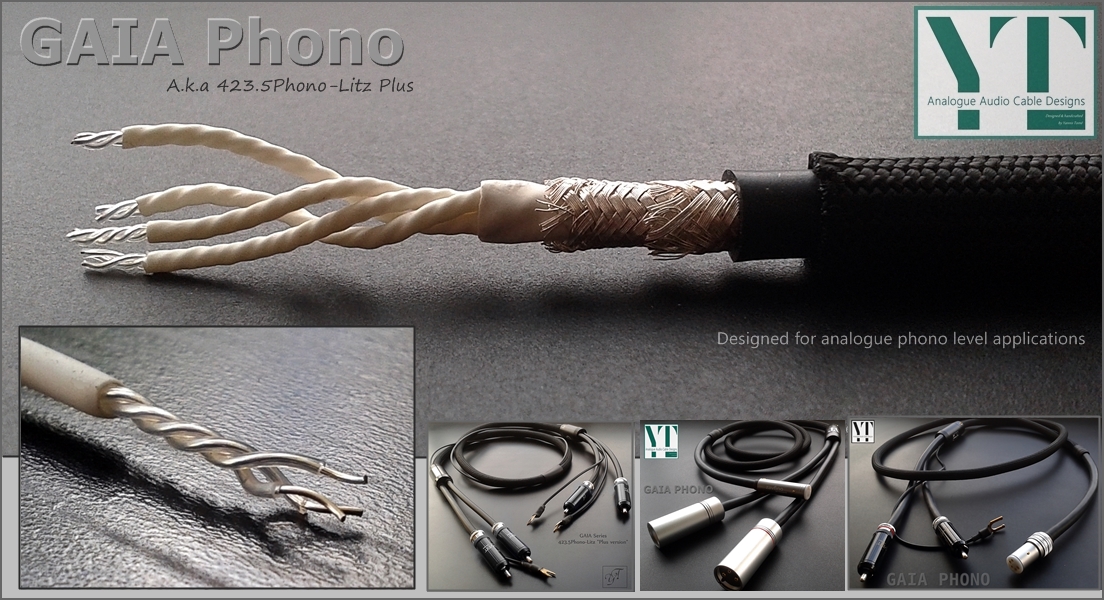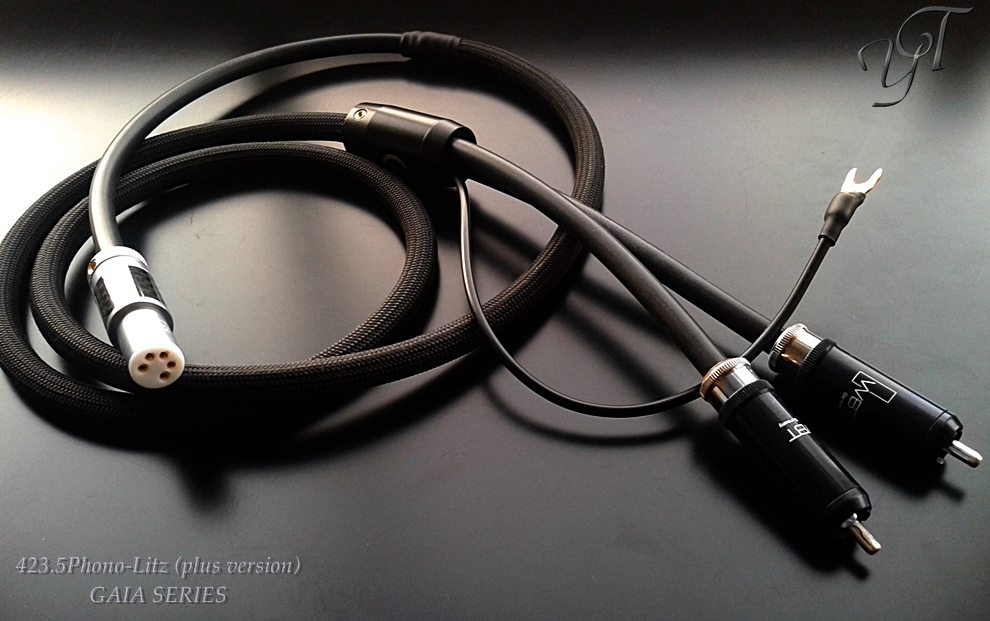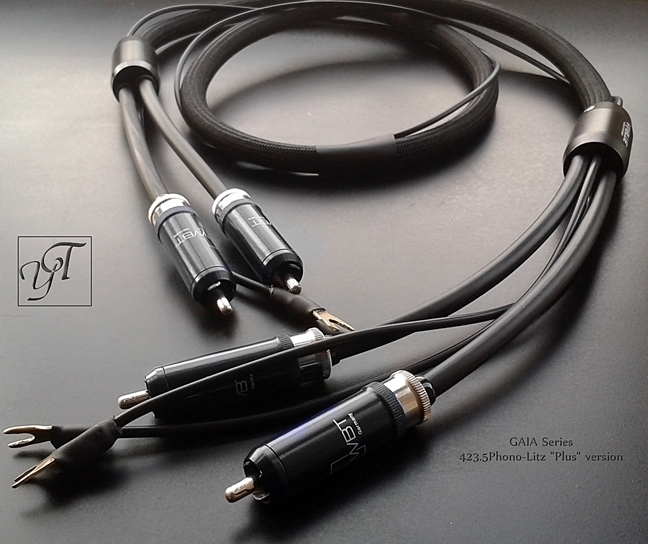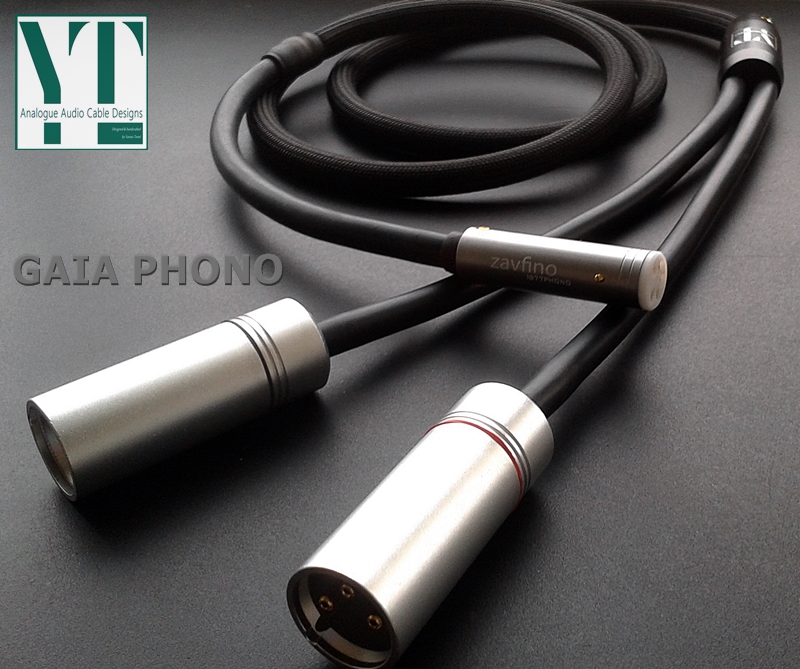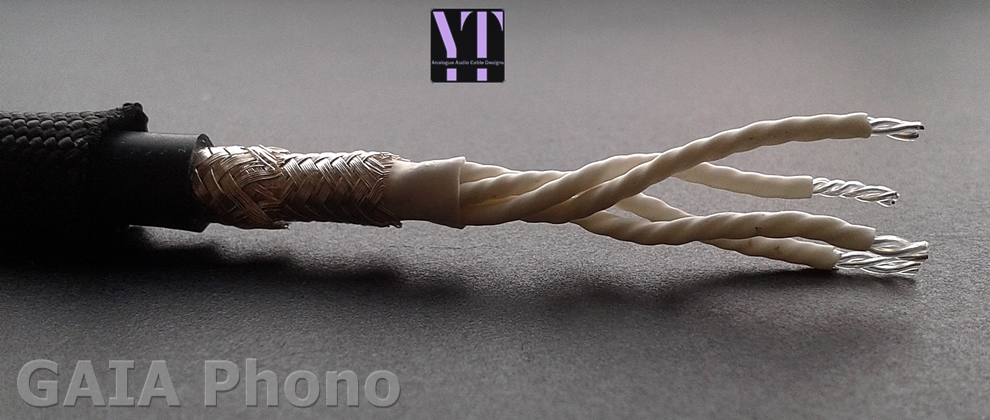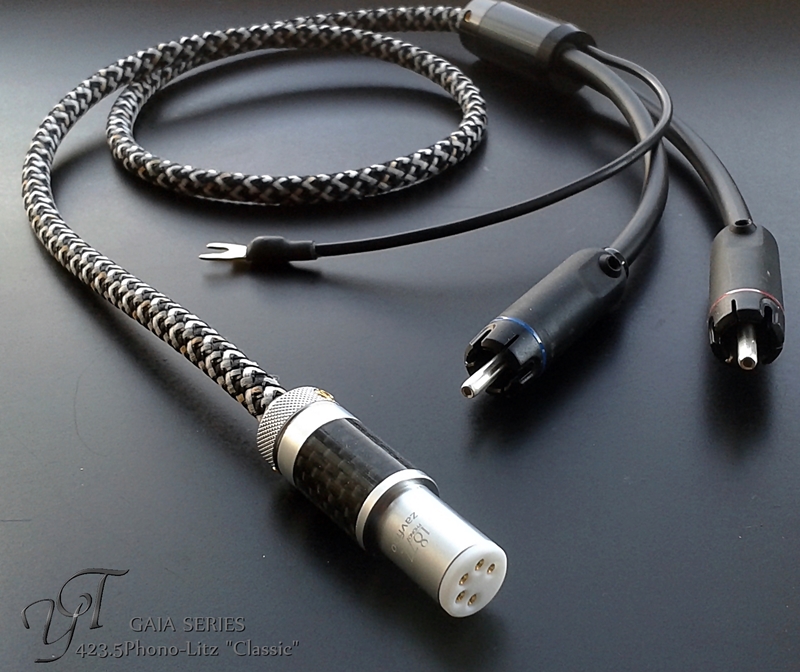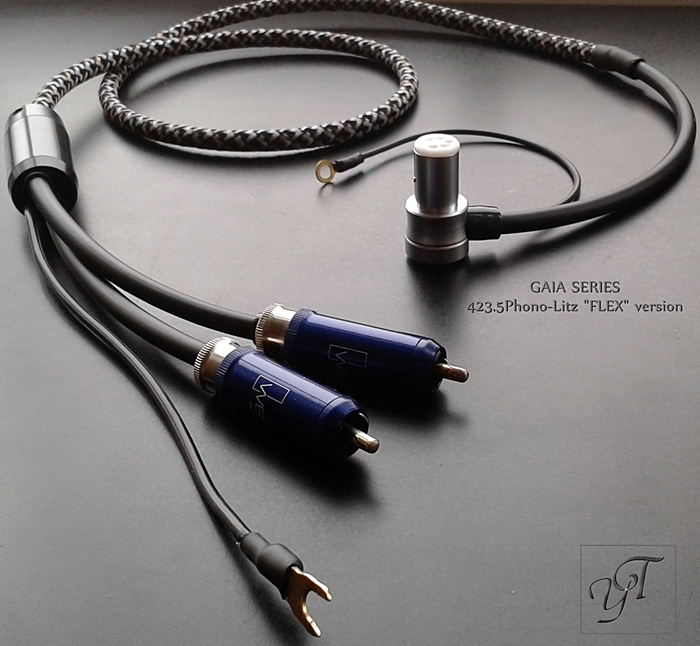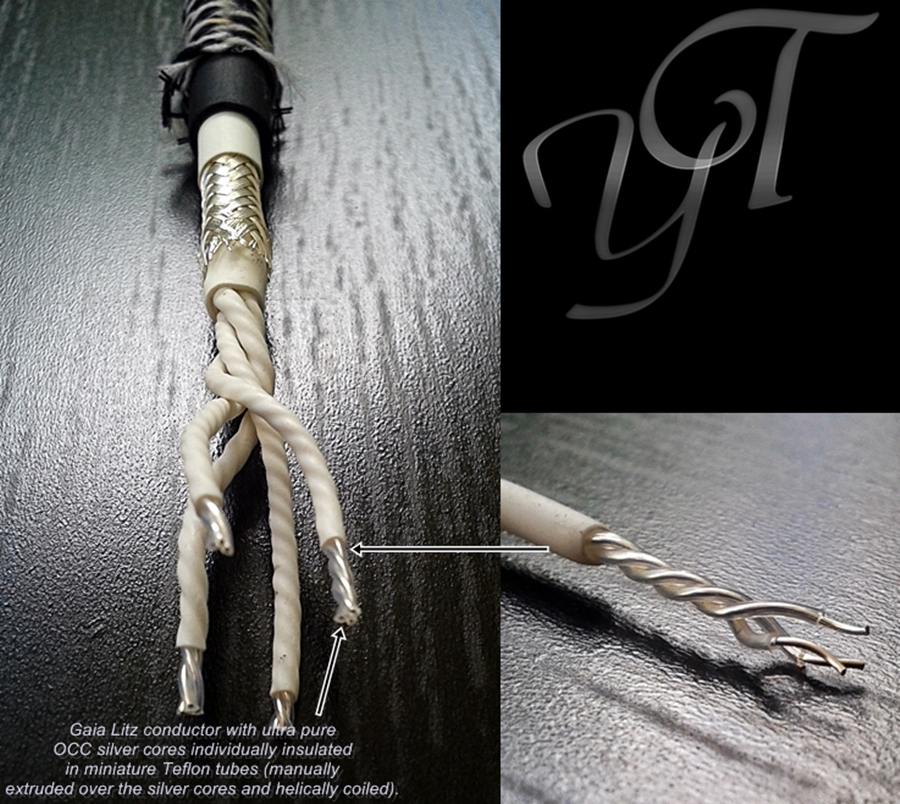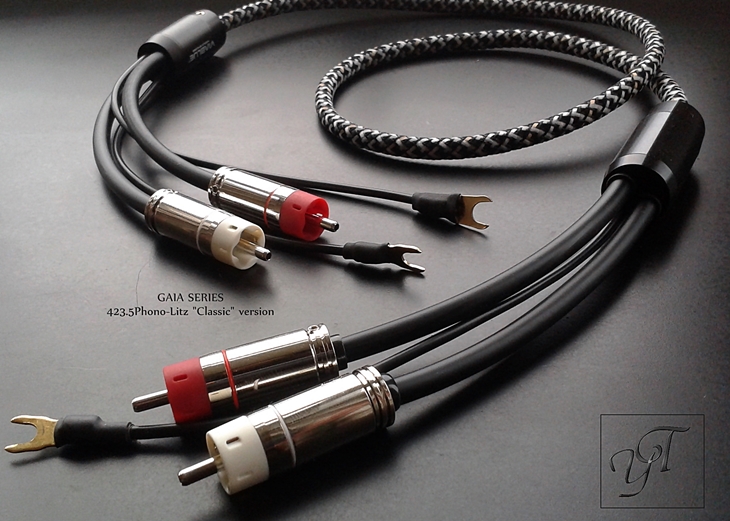|
The Gaia Phono is a shielded, starquad cable with Gaia Litz type conductors. The Litz type conductors that we produce for this cable are a significant improvement over solid, stranded as well as traditional Litz designs that are available in the industry. As with all of our handmade cables, the OCC strands are made of one of the purest silver and have practically no crystal boundaries. However, the unique character of the Gaia Litz conductors is primarily the result of a combination of dielectric materials, suitable geometries and the methods we use for their application.
The conductor design:
As with all of our cables of the Gaia series, each conductor consists of individually Teflon insulated silver cores. Ultimately, each of these Litz conductors is a group of low mass signal lines. The small cross-section area of each discreet conductor permits an even distribution of the signal carriers across each wire resulting to stable capacitive and inductive values across all frequencies. The process of creating these Litz conductors is extremely time consuming and complex and should not be confused with the Litz braiding of solid silver cables.
To form a Gaia Litz conductors, solid PTFE (primary insulation) is manually extruded over each of its strands, creating a fine, airtight layer with the desired thickness on the surface of the metal. In Effect, this Teflon film replaces the enamel coating found on typical most wires. Unlike typical Teflon litz wires, no extreme temperatures are involved and no added substrates are applied on the bare silver surface. The entire process is mechanical. The insulated cores are helically wound and encased in an outer layer of lower density PTFE insulation to form a single Gaia conductor. The airtight PTFE insulation prevents any interaction or movement of the wires, maintains a fixed proximity among all the strands of the same conductor and it creates an outstanding layer of dielectric with much lower involvement than any of the typical coatings found on Teflon Litz wires that are currently produced. PTFE has excellent electrical properties (remarkable electrical stability with a low dielectric constant that shows less change over a wide range of temperatures and frequencies than any other solid material, and dissipation factor which remains constant and below 0.0004) compared to any coated Litz wire currently produced.
The result is a very neutral sound in all frequencies without colourization and footprints. In addition, the Gaia conductors have outstanding mechanical characteristics They achieve greater flexibility and strength than bare stranded wires while, they do not suffer from the inherent weaknesses of bare stranded formations. In addition to their excellent mechanical characteristics Litz conductors Gaia Litz wires eliminate any direct strand interaction and they prevent surface marring (corrosion and mechanical wear). Their embodiments have excellent conductor resistance and inductance to cable capacitance ratios.
The cable design:
In order to produce the base for the Gaia Phono, four of the Gaia Litz conductors described above (approx. 23AWG effective gauge each) are arranged into a starquad geometry. Star-quad geometries are used throughout the cable industry and in particular where low level signals are involved in order to enhance the noise rejection characteristics of the cable. However, note that the geometry of the cable (star-quad, Litz braid, twisted pair etc) does not replace the effectiveness of the shield in terms of dealing with EMI and RFI. Claims of “self-shielded” Litz geometries for unshielded cables are rather misleading. A cable that does not have a shield is an unshielded cable and subject to all the consequences this entails. The starquad formation of the Gaia Phono is encased in two additional layers of medium density Teflon (bedding/packing insulation) to determine the proximity between the signal conductors and the cable shields. Medium density Teflon is a material with a very low dielectric constant (significantly lower than solid PTFE) while it is also very flexible.
The Gaia Phono features two high density, overlapping silver plated OFC copper braided shields covering the internal signal conductors. This dual shielding layer is more than sufficient to prevent EMI and RFI to affect the signal. It offers and extremely high optical coverage near 100% (inner shield: 98% and outer shield: 98%) which is very rarely achieved in consumer audio cables very low impedance to the ground and a skin depth adequate to deal with low frequency noise in the most demanding conditions.
The outer protection of the cable aims at creating a good electrical insulation with suitable mechanical properties (i.e. strength, flexibility, vibration absorption & isolation, abrasion protection etc). At the same time it offers adequate protection against moisture, UV light and general weathering conditions in a domestic or professional environment. To achieve this the Gaia Phono has three insulating layers above the shielding: Teflon insulation, a flexible silicone rubber jacket and a dense, multi-filament braided sleeve (with a soft, fabric-like texture) . Ensuring that the cable is adequately protected and not simply dressed with an outer braid (which is the case with most handmade cables) will contribute to a long life of consistent performance.
Despite the density of the cable assembly, its size and thick braided shields, all the parts are aligned and packed with high precision to produce an extremely flexible cable. The cable has a diameter of 7mm. The portion covered by the outer braided sleeve has an overall diameter of approx 9mm.
The cost of the materials and the work required in order to form such conductors inevitably set a high price for these cables. However, its performance alone fully justifies its price regardless any claims we may make about the costs involved, the design advantages or its electrical characteristics. The construction of each of these cables requires many hours of work over a period of a few days and each cable is made on order from its first stage to the last. This means these cable are not available for immediate dispatch and usually a 4-6 days lead time is required.
Over the past years, our Gaia cables have replaced some of the top lines of highly acclaimed cables of the market (i.e. Nordost, Furutech, Audionote, Kondo etc) on the systems of many of our customers.
|
